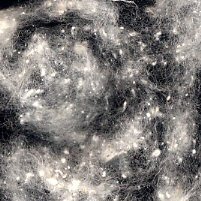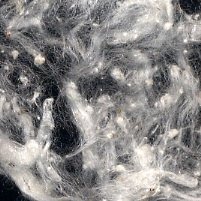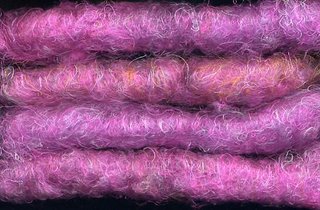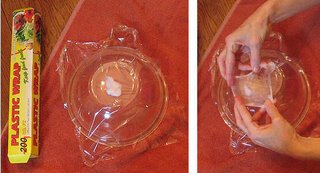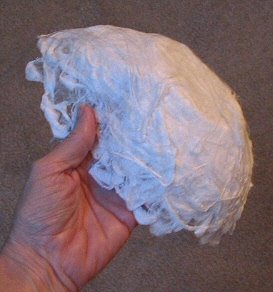
By
LeighFiber folks are normally a congenial lot: friendly, helpful,
generous, easy going. But there are a few controversies which sometimes seem to
have a definite Jekyll and Hyde effect on us.
One of them is the
Scotch tension vs. double drive debate. I resigned my participation from this
one a long time ago, having set up my Ashford Traddy with Scotch tension and my
Kromski Minstrel in double drive.
The other debate seems to be over
which is the best way to warp one’s loom: front to back, or back to front. So
far I’ve merely been a bystander. I learned f2b and except for one dismal
attempt to learn b2f four years ago, have remained a f2b warper.
Until
now. I’m not sure whether it was the lure of “more even tension,” or the appeal
to my professional studentism. Or perhaps it was the twinges of guilt I felt
when my husband would ask “Whatever happened to the thing I made for your loom,”
referring to my raddle. So when fellow
Online Guild
member and former f2b warper Diana suggested it as another possible self study,
it sounded good to me. And with 5 plus yards to put on the loom, now seemed like
the perfect time to give this method another try.
So I’ve done my
homework. In addition to Deb Chandler’s
Learning to Weave, I’ve dug out
Peggy Osterkamp’s
Warping Your Loom & Tying on New Warps, checked out
the OLG’s online resources, downloaded a how-to pdf file from
Interweave Press, and
took a close look at the contraption on Charleen’s Fiberblog.
I ended
up choosing the Chandler method, mostly because it seemed most similar to what
I’m already used to. I also have Osterkamp handy and am referring to it
frequently. Here is my progress so far:

One of the things I’m realizing is that though I had previously thought I
was doing a good job tensioning my warp, I really wasn’t. Some warps wove
off beautifully, and some didn’t. But I couldn’t put my finger on what the
problem was. (This is one of the unfortunate consequences of being largely
self-taught.) In going back over the material now, I’m understanding things
that I didn’t grasp before. I’m not sure if it’s like that for everyone, but
I find that my brain can only process so much information before I have to
put it to use. After that I can go back over the same information and pick
up more details, which in turn I put into practice, and so on. Each time I
go back over the material, I experientially understand more and more of it.
Head knowledge is good, but experience transforms it into reality!
So I’m paying more attention to details I hadn’t noticed before, while still
giving myself room to make mistakes and continue to learn. Hopefully this will
be a lesson well learned, but the proof will be in the weaving of course.

Next........
b2f Part 2
Related Posts:




